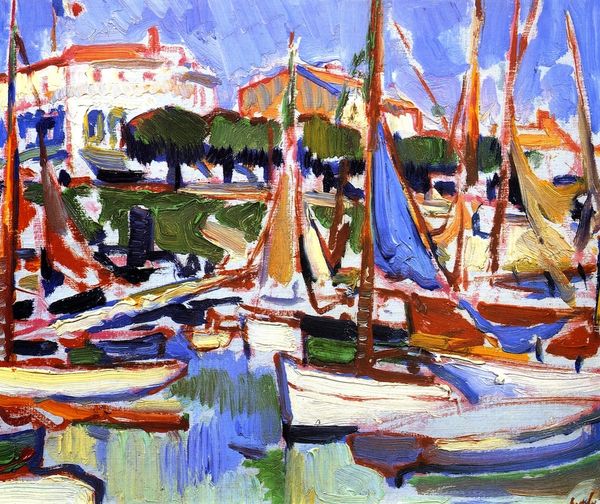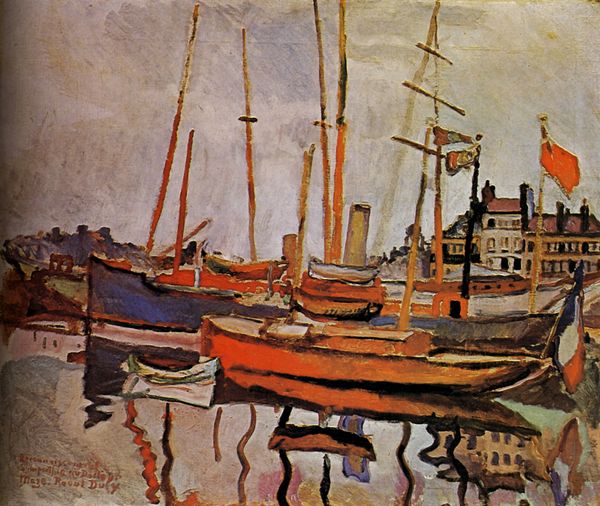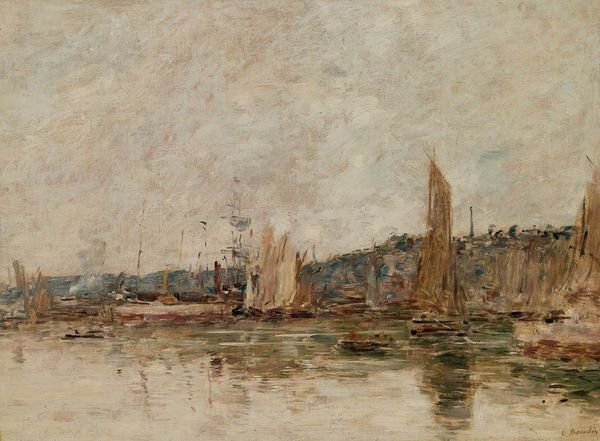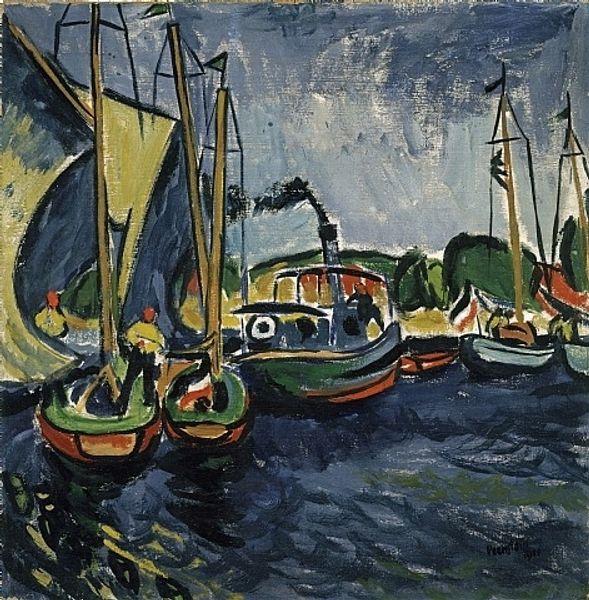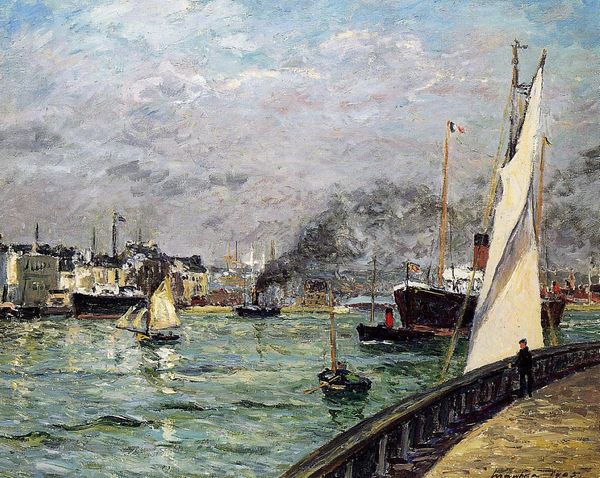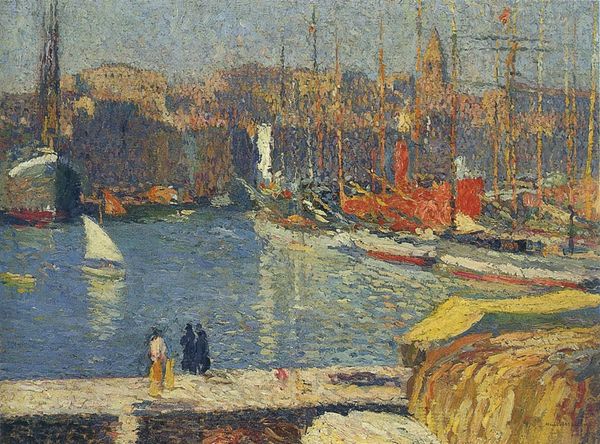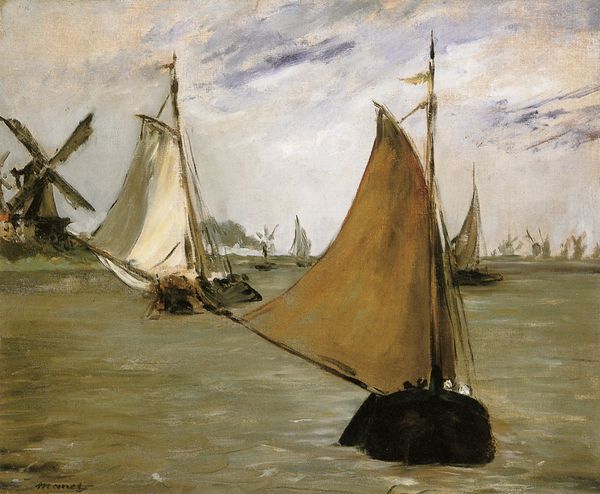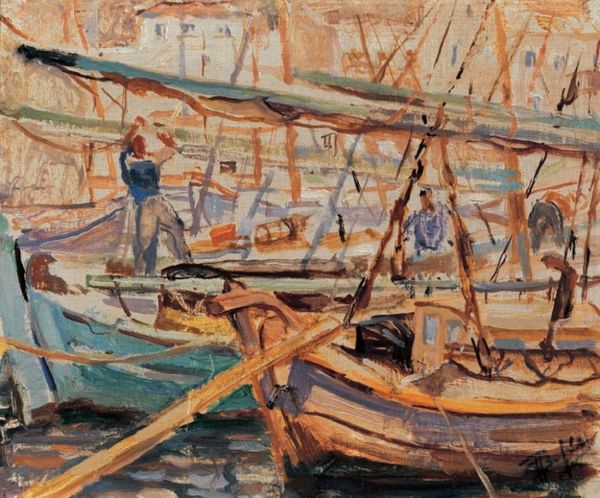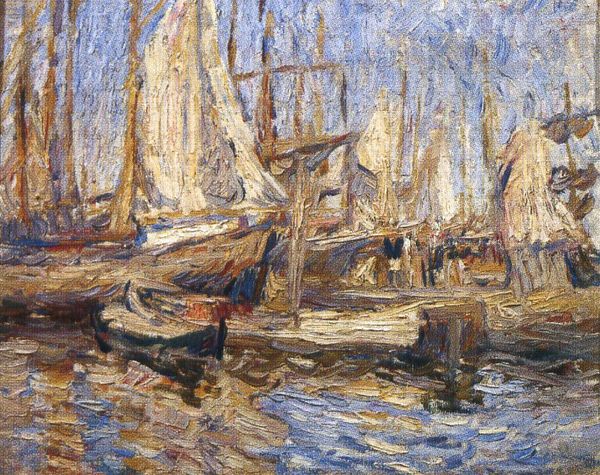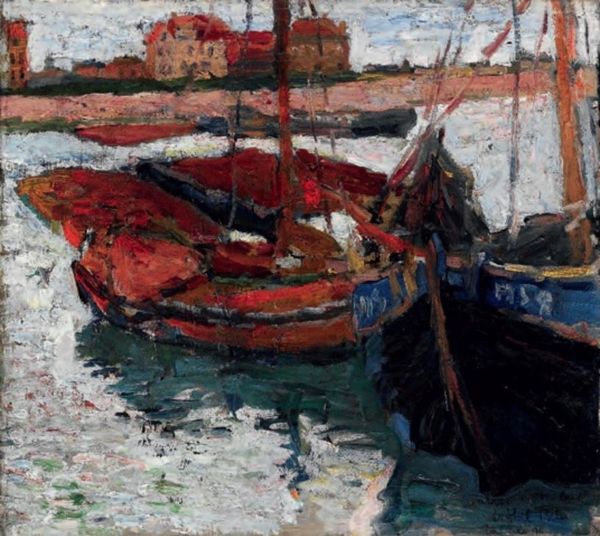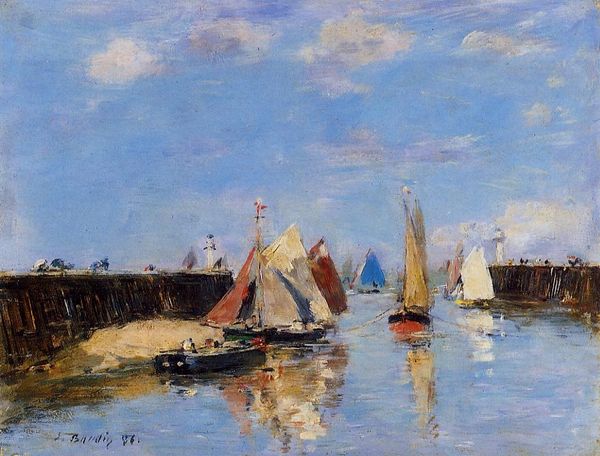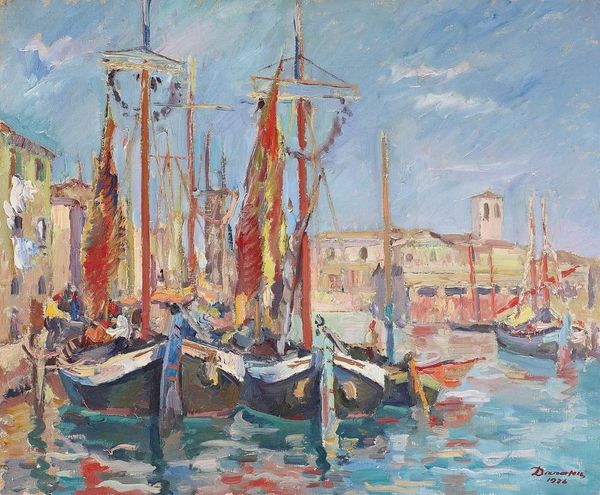
painting, oil-paint
#
boat
#
ship
#
painting
#
impressionism
#
oil-paint
#
vehicle
#
landscape
#
impressionist landscape
#
oil painting
#
water
#
cityscape
Copyright: Public domain
Curator: There's such a gorgeous hazy light to it. Everything sort of dissolves at the edges, like a memory of a busy harbour front. It feels nostalgic. Editor: Indeed. This is Eugène Boudin's "The Entrance to the Port of Honfleur," painted in 1865. A vivid example of the early Impressionist style, focusing as it does on capturing the transient effects of light and atmosphere, before everything was solidified by academic rules. Curator: Absolutely! Look at how the buildings are barely more than suggestions, and the boats are alive with movement. It feels like a fleeting moment perfectly captured, with thick brushstrokes full of texture and color that convey such immediacy. You can almost smell the sea air. Editor: Honfleur, of course, was an important port, and a real hub for artistic exchange at the time. Courbet and Monet, to name just a couple, painted there frequently. Boudin, as a native of the area, became known as a key influence, guiding Monet, in particular, towards painting en plein air, a radical concept back then! Imagine escaping the studio... Curator: Can you imagine a world without sunlight sneaking onto canvases? It feels almost heretical now to think people wouldn't want it. Still, even now there is such raw talent and honest work that lives on the walls and on easels, the honesty and commitment remains from an old practice. He just feels so honest here in what he captures, like he's trying to get to the heart of seeing and feeling something real. Editor: Boudin's commitment also meant representing the daily lives of people connected with the sea, an important economic, as well as social reality. His art provided glimpses into how emerging industrial economies also fueled vibrant leisure activities—painting became a mediator. It documented transitions, which were previously unavailable. Curator: Thinking about it that way really fills it with so much emotion, I just got so lost in the boats, in the moment of it all, I almost didn't see beyond. The small glimpse in that everyday human world really gives a new lens and purpose to that moment and everything captured in the painting itself. I feel a stronger appreciation now of the scale and honesty behind it. Editor: Agreed, these seascapes served as important, unvarnished documents in a rapidly changing world.
Comments
No comments
Be the first to comment and join the conversation on the ultimate creative platform.
